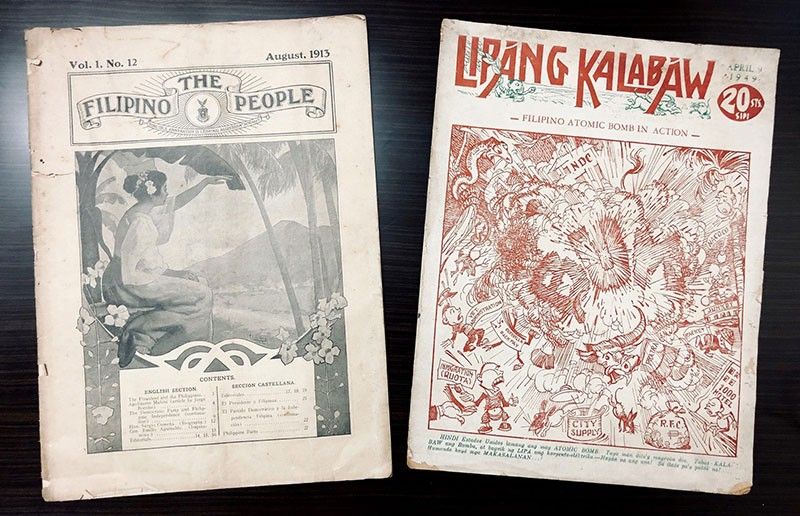Minding the magazine

Last week, I wrote about acquiring copies of English magazines from the 1770s so my students in English and American literature could see what people in those days actually read, and what “entertainment” may have meant to them. I noted how magazines are arguably better chroniclers of everyday social life than books, especially since they also came to be profusely illustrated, and may even have sold copies more on the strength of their illustrations than their text.
This was certainly true for Ilustracion Filipina, an illustrated magazine that came out twice a month between March 1859 and December 1860—a pitifully short life-span for such a glorious publication. Not to be confused with the similarly titled La Ilustracion Filipina, published between 1891 and 1905, Ilustracion Filipina featured exquisite lithographs depicting scenes and aspects of Filipino life, produced by such renowned artists as Baltasar Giraudier and C. W. Andrews. I have yet to be so fortunate as to find even one copy of this magazine, which was bought by subscription and lasted for no more than 44 issues. (An 1859 compilation with 14 lithographs by Andrews sold in Spain in 2013 for 1,400 euros.)
What I did come across in my near-daily trawlings of eBay a few weeks ago were issues of The Filipino People (Vol. 1, No. 12) and Lipang Kalabaw (April 9, 1949). In all these years of looking at hundreds of publications, I had not seen these two magazines.
When I got my hands on them, the older magazine proved particularly interesting, because it was published and edited in Washington, DC by none other than Resident Commissioner Manuel L. Quezon (who would have been about 35 then), “as an official medium for expressing the views of the people whose name it bears.” The magazine is “devoted solely to… the fair and truthful exposition of the relations between the Philippines and the United States, with a view to hastening the ultimate establishment of Philippine independence upon a self-governing republican basis.” Tellingly, its masthead contains a quotation from (of all people) McKinley: “Forcible annexation is criminal aggression.”

An Andrews lithograph from Ilustracion Filipina, 1859
As a political magazine, it’s full of polemical articles, not very interesting today to anyone but historians, and brief biographical profiles of Apolinario Mabini, Sergio Osmeña, Emilio Aguinaldo (whose doorkeeper informs the American interviewer “If the American gentleman would be pleased to wait but a moment he would be joined by the master of the house”). It contains a Spanish section, basically a translation of the English pages. While I was hoping for a poem or a short story, the only touches of art in the magazine were a photograph of a majestically clean San Sebastian Church, and the cover (sadly only in black and white) by Fabian de la Rosa.
Lipang Kalabaw, as it turns out (and many thanks to Crispin Ponce for the source material), went through three incarnations — first as a weekly owned edited by Lope K. Santos between 1907 and 1909, with caricatures drawn by Jorge Pineda. This first version struck hard at its political targets, which struck back even harder, forcing the magazine to shut down. Santos revived it in 1922 under banner of Bagong Lipang Kalabaw, promising to be gentler in its tone — but it zeroed in on Governor-General Leonard Wood, and also closed shop after two years following a libel suit. Its third, last, and supposedly most tepid version came out in 1947. (The “lipa” refers to a big-leafed tree.)
My 1949 issue curiously has few real bylines and no editorial board, just pseudonyms like “Binatang Balo” and “Igueng Bel-Bel” — probably the smart thing to do if you were skewering President Quirino and the Congress, with jibes like “Paligsahan sa Pagnanakaw: Ngayon, sa ating Kongreso, and mga usapan ay hindi na ukol sa ‘kung sino ang magnanakaw at sino ang hindi,’ kung di ay ‘sino sa ating lahat ang nakapagnakaw ng lalong marami.’ Samakatwid, lumalalabas na ‘todos na parejo, camaron y cangrejo.’”
Perhaps this magazine deserves a fourth incarnation?
If it’s not too late to dream, one of the things I’d like to do in my impending retirement is to create and edit a magazine — even just an e-zine — I’ll call The Filipinist, devoted to antiquarian books, periodicals, paintings, sculpture, photographs, prints, maps, coins, stamps, and historical memorabilia — anything and everything having to do with the Filipino past. It won’t be for scholars (we have enough of those) but for enthusiasts, although scholars would of course be welcome to contribute their insights. I think I should be able to assemble a pretty credible team of editors and writers among like-minded friends and fellow collectors, and in the very least, The Filipinist should fill a gap in media overloaded with articles about tomorrow, technology, and the world out there. And just in case these musings become more than an idle wish, I’ve set aside the domain name for filipinist.ph, as my small personal investment in the future of the Pinoy magazine.
* * *
Email me at jose@dalisay.ph. and visit my blog at www.penmanila.ph.



















